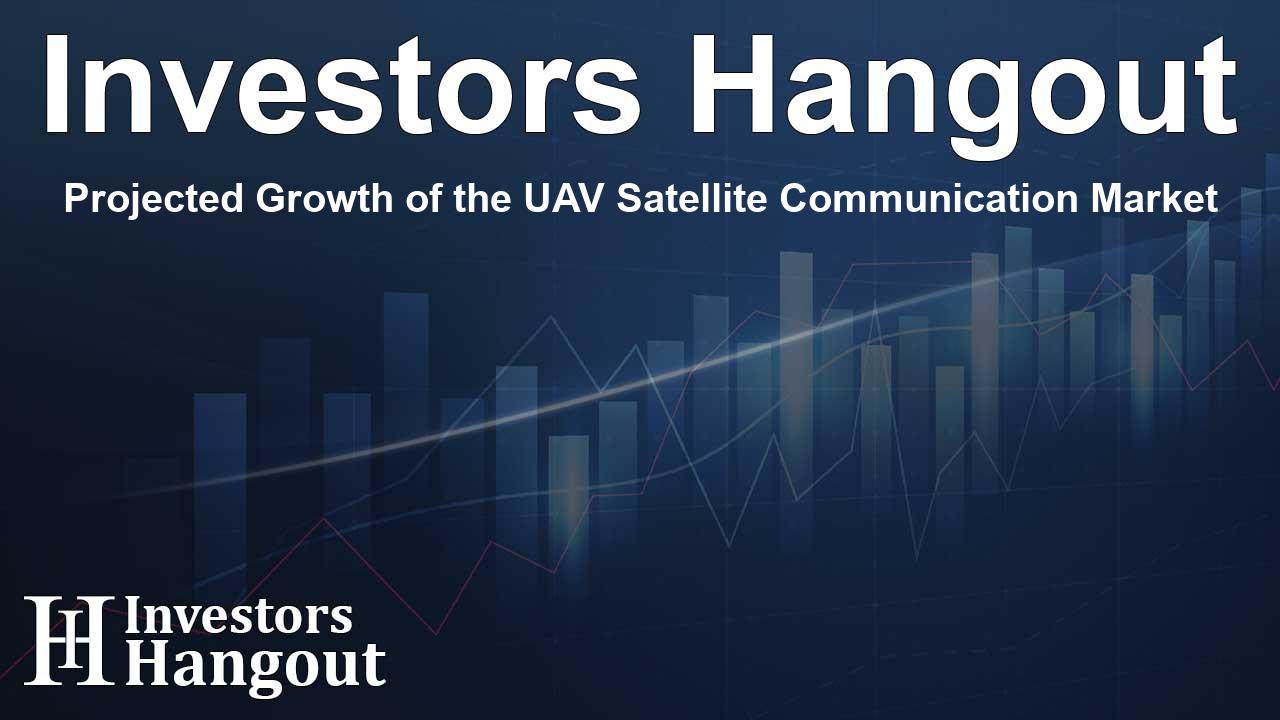Projected Growth of the UAV Satellite Communication Market

Overview of the UAV Satellite Communication Market
The UAV Satellite Communication (SATCOM) market is on the verge of remarkable growth. Currently valued at USD 6.21 billion, this sector is projected to surge to USD 10.79 billion within the next decade, marking a compound annual growth rate (CAGR) of 6.38%. This growth is largely attributed to the escalating need for high-quality connectivity across various applications such as defense, logistics, and agriculture.
Drivers of Market Expansion
Demand for Reliable Connectivity
One of the primary catalysts for this market's expansion is the increasing demand for reliable, high-bandwidth connectivity. As UAV deployments proliferate in remote areas, the necessity for real-time data transmission has gained considerable importance. In military operations, for instance, real-time communication is crucial for reconnaissance and border surveillance.
Technological Advancements
Advancements in technology have made SATCOM solutions more compact and efficient. The miniaturization of components such as antennas and transceivers is driving this evolution, making UAV systems more accessible for various commercial applications. This trend is particularly noticeable in the U.S. market, where initiatives to enhance low Earth orbit satellite networks are underway.
Key Players in the UAV SATCOM Market
The UAV SATCOM sector features several major players, each contributing to the industry in unique ways. Companies such as Inmarsat, Viasat Inc., and Iridium Communications are notable contributors, focusing on delivering solutions that enhance UAV operational efficiency.
Product Innovations
Leading companies are continually innovating to meet the growing demands of the market. For example, Inmarsat offers the SwiftBroadband service, providing seamless connectivity for UAV operations. Similarly, Viasat Inc. has introduced the VR-12 Ku-band Antenna System, which is designed to enhance satellite communication capabilities for UAVs.
Market Segmentation
By UAV Type
The market can be segmented by UAV type, with the fixed-wing segment commanding a major share due to its long-range capabilities and endurance, vital for military missions. The hybrid UAV segment is expected to exhibit significant growth, combining characteristics that improve operational flexibility.
By Application
The military and defense segment presently dominates the market, representing a significant share. Military operations increasingly utilize UAVs equipped with SATCOM for enhanced operational management in challenging environments. However, the civil and commercial segments are expected to witness the fastest growth, particularly in applications related to agriculture, infrastructure, and logistics.
Regional Overview
North America is leading the UAV SATCOM market due to substantial investments geared towards military modernization. The adoption of UAVs in military operations and a robust satellite infrastructure have placed this region at the forefront. Notable U.S. companies like General Atomics and Northrop Grumman are heavily involved in developing these systems.
Growth in Asia Pacific
The Asia Pacific region is poised for rapid growth as well, fueled by increasing defense budgets and a burgeoning commercial UAV market. Countries are investing heavily in SATCOM infrastructure to enhance their UAV capabilities. For instance, India's initiatives to bolster satellite-based navigation are indicative of the region's commitment to expanding UAV operations.
Conclusion
The UAV Satellite Communication market's trajectory indicates a promising future, driven by technological advancements, expansion in military and commercial applications, and a demand for reliable satellite connectivity. As global investments continue to rise, we can expect remarkable innovations that will further enhance the capabilities of UAVs across various sectors.
Frequently Asked Questions
What is the current value of the UAV Satellite Communication market?
As of now, the market is valued at USD 6.21 billion and is expected to grow to USD 10.79 billion by the end of the projected period.
Who are the leading companies in the UAV SATCOM market?
Major players include Inmarsat, Viasat Inc., Iridium Communications, Hughes Network Systems, SES S.A, and Thales Group.
What are the key applications driving market growth?
The military and defense applications currently dominate the market, while civil and commercial applications are also expected to expand significantly.
How is the market segmented?
The market is segmented by UAV type, application, and components such as transceivers and antennas.
What region is leading in UAV SATCOM adoption?
North America is leading in the UAV SATCOM market due to significant investments and a strong satellite infrastructure, although the Asia Pacific region is also rapidly emerging.
About The Author
Contact Addison Perry privately here. Or send an email with ATTN: Addison Perry as the subject to [email protected].
About Investors Hangout
Investors Hangout is a leading online stock forum for financial discussion and learning, offering a wide range of free tools and resources. It draws in traders of all levels, who exchange market knowledge, investigate trading tactics, and keep an eye on industry developments in real time. Featuring financial articles, stock message boards, quotes, charts, company profiles, and live news updates. Through cooperative learning and a wealth of informational resources, it helps users from novices creating their first portfolios to experts honing their techniques. Join Investors Hangout today: https://investorshangout.com/
The content of this article is based on factual, publicly available information and does not represent legal, financial, or investment advice. Investors Hangout does not offer financial advice, and the author is not a licensed financial advisor. Consult a qualified advisor before making any financial or investment decisions based on this article. This article should not be considered advice to purchase, sell, or hold any securities or other investments. If any of the material provided here is inaccurate, please contact us for corrections.
